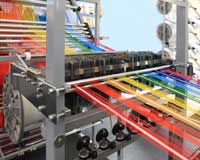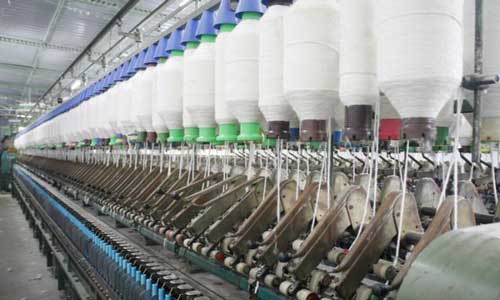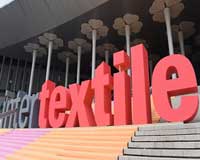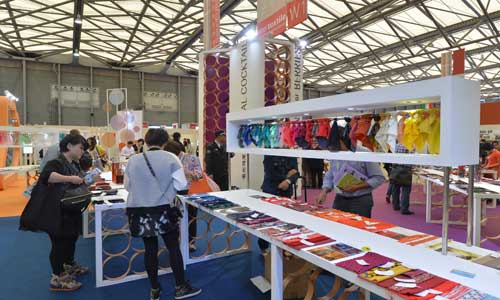FW

The US textile industry and their Indian counterpart have the potential to co-create $100 billion additional business in both countries, thereby strengthening bilateral trade. As far as India’s strengths are concerned, it has a strong base in fibres, spinning, etc, while finishing is the US’ strength. The US textile industry is one of the more important employers in the manufacturing sector, with 233,300 workers. The United States is a globally competitive manufacturer of textiles, including textile raw materials, yarns, fabrics, apparel and home furnishings, and other textile finished products. India’s strength lies in cotton, manmade fibers, and a wide variety of yarns and fabrics, including those for apparel and industrial end-uses.

The US industry is globally competitive, being third in global export value behind China and India. US exports of textiles increased 39 per cent between 2009 and 2015, to $17.6 billion. In 2015, the value of US man-made fibre and filament, textile, and apparel shipments was worth an estimated $76 billion. This is an increase of almost 14 per cent since 2009, points out Arvind Sinha, CEO & Chief Advisor, Business Advisors Group. Investment in textile mills and textile product mills has seen tremendous growth to register $1.8 billion in 2014, which is an increase of 87 percent.
Subsets capturing growth
Nonwovens are being used to make products lighter, more efficient, and cost effective. Many lighter and longer-lasting non-wovens are being introduced in a variety of fields including packaging and autos. Specialty and industrial fabrics serve an array of markets, everything from awnings to auto airbags. As the US specialty fabric business has continued to grow, some areas are seeing rapid advancement, for example, the base fabric used in road construction, erosion control, and spoil containment in landfills.
Medical textiles are one of the most important, continuously expanding and growing fields in technical textiles. The medical textile industry has been improving existing products and creating new ones with new materials and innovative designs. Some of these new products are being designed for less in various surgical procedures, infection control, and accelerated healing.
North America emerged a leading regional market for industrial protective apparel and accounted for over half of the total market volume in 2013. Stringent regulatory guidelines coupled with high levels of safety awareness in the industry are expected to drive the regional market growth over the next six years.
Textiles protect from harsh environment
A garment can be water-proofed coating it with polymers such as rubber, PVC, neonprene and acrylics or polyurethanes. These solutions furnish very low permeability vales (200 g/m2/24h) against the requirement of 2000-5000 g/m2/24h). Water repellent finishes are good for light showers but no adequate for prolonged exposure to heavy downpours which are not uncommon in a soldier’s life. The most effective solution is to laminate a nylon base fabric with a layer of microporous PTFE film, also known as Gore-tex membrane.
The US Army Natick Research, development and engineering Center has developed an Extended Cold Weather Clothing System to protect soldiers’ from extremely cold weather. It consists of polypropylene underwear, cold weather trousers, field jacket and trouser made with a semi-permeable film laminated fabric. This system performs well up to -25 F (-31.7 C). This range can be extended to – 60 F (-51.1 C) adding a polyester pile shirt and bib overalls. A lot needs to be done to develop better protective fabrics for the military personnel. Not only in terms of performance of individual aspects of protection but also integration of solutions into a protective system, which is economical, stress-free and performs optimally.
On an uptick
The value of shipments for US textiles and apparel was $74.4 billion last year, a nearly 11 per cent increase since 2009 while exports of fiber, textiles and apparel were $26.3 billion in 2016. From the figures, it is evident that both countries have tremendous potential, however, investment has to come in both the countries preparatory. Product will be made in USA which will make it eligible for US military and supplies to various garment manufacturers.
Indeed, this is not an easy task. Both the countries have to establish a working group under the direction of government in both countries and chambers such as Indo-American Chamber of Commerce, US Consulate in Mumbai should be the part of this team to create design and implementation papers on such a huge but not easy opportunity, there has to be very strict compliances as USA is a very high quality market and meeting compliances very essential. This will require big thinking, great implementation force and lot of support from all big players from America, US Defense Department and Indian Textile Industry also to meet the task.
Karl Mayer has been expanding its service operations in Asia. This targeted capacity expansion has focused on Vietnam, Bangladesh and India. Karl Mayer has taken on two service technicians to provide its Vietnamese warp knitting customers with technical support. The training was carried out by Karl Mayer in China. Karl Mayer also relies on its Chinese subsidiary for its operations in Bangladesh. From February to the end of May 2017, roughly 60 two-bar HKS machines were installed at the premises of a domestic producer of mosquito nets. More machines are to be sold in the middle of the second quarter.
As far as warp knitting machines are concerned, Bangladesh is a relatively new market for Karl Mayer, but one which is currently developing in a very promising way. India is seen as more as a market offering a great deal of potential. Karl Mayer is currently introducing its Karl Mayer Connect app on to the Indian market to effectively complement its technicians operating there. If required, customers can communicate with the Karl Mayer’s service organisation via mobile terminals. To send off a service request, all that has to be done is to scan in a QR code from the machine’s touch screen display, and the main machine data are transmitted in order to explain the problem.
The Indian Texpreneurs Federation (ITF) has appealed to the commerce ministry to include textile products while negotiating expansion of its preferential trade agreement (PTA) with the Mercosur trading bloc in Latin America comprising Brazil, Argentina, Uruguay and Paraguay and discuss ways to reduce duties on textile products in this region. ITF points out the region holds tremendous potential for India’s textile exports and the existing PTA does not include any textile item. The duty on most textile products in this region is very high — between 24 and 35 per cent — and the market share of Indian textile products there at present is negligible.
As China is gradually losing its competitive edge in textile trade, says ITF, if India can capture 15 per cent of China’s textile exports, it can double the country’s textile exports. Therefore there is a need to focus more on free trade agreements and market diversification for textile products.
A PTA is a limited FTA where partner countries reduce import duties on a few identified products for the other. India’s exports to the Mercosur bloc in 2015-16 were 3.4 billion dollars while imports were 6.6 billion dollars. This was just a fraction of the country’s bilateral trade with the United States valued at 68.6 billion dollars and the European Union at 115 billion dollars.
Indonesia’s Ministry of Industry (Kemenperin) projects believe the value of national textile and textile product (TPT) exports will grow rapidly in the next two years. This optimism is in line with various programs and incentives given by the government to boost the performance of leading sectors.
The textile industry is an export-oriented labor-intensive sector. In 2019, they are targeting exports worth $15 billion, says minister of industry (Menperin) Airlangga Hartarto. He further added that there will be additional production capacity of 1,638 thousand tons per year with an investment value of Rp 81.45 trillion and employment of 424,261 people. To expand their export market the government is working to establish cooperation agreements with the United States and the European Union. The import duty of Indonesian textile products is still subject to 5 to 20 per cent in the US, while Vietnam's exports to America and Europe are zero per cent, says Hartarto.
Hartarto is optimistic the national textile industry can compete globally because, this sector has been integrated from upstream to downstream and its products are known to have good quality in the international market.
To achieve the target, new investment and expansion in every sector of textile industry is needed. The government is focused on creating a conducive investment climate by issuing policies that could facilitate industry players in trying in Indonesia. For example, facilitating the provision of fiscal incentives in the form of tax allowance and tax holiday says Airlangga.
French Connection’s losses narrowed in the first half of the year. The struggling fashion brand is continuing to close underperforming stores and in the last 12 months has closed seven stores, resulting in a 10.2 per cent reduction in average retail trading space. New stores will be opened in appropriate locations.
In March, the firm reported its fifth successive annual loss due to mounting competition from fast fashion brands such as ASOS and Zara. However, French Connection is taking significant steps to return to profitability in the near future.
Revenue at its wholesale operation rose 7.2 per cent, with the business returning to growth in UK, Europe and North America. French Connection, founded in 1972, now has 409 outlets. The company is expected to return to profit in 2019, in view of the rationalisation program and tighter cost controls.
French Connection’s current position is a far cry from the heady days of 2004 when the huge success of its FCUK brand boosted the company's shares. The brand offers a fashion-forward clothing range for men, women and children with a quirky spin on design, priding itself on quality and affordable prices. It has easy-to-wear staples for both day and night like everyday shirts, affordable skinny jeans, and casual-cool bomber jackets.
The textile processing industry is heavily dependent on water in virtually all steps of the production process, from desizing to bleaching and dyeing. It has one of the most extensive water footprints of all sectors. DNV GL and Paradigm Shirt are two companies working to make responsible water consumption mainstream, with the launch of a new self-assessment tool and a line of sustainably produced T-shirts.
DNV GL and the United Nations Industrial Development Organization (UNIDO) have together developed a self-assessment tool to help textile companies evaluate the water footprint of their manufacturing processes. The information gathered from the assessment allows companies to make more informed decisions about how to manage water consumption in their supply chains.
The tool is a measure for textile companies to obtain a better understanding of their resource efficiency and insight into where they can reduce consumption. DNV GL and UNIDO have a common interest in combating water scarcity and improving industry awareness of water-related risks and opportunities.
The Global Network for Resource Efficient and Cleaner Production will facilitate the use of the tool, which primarily targets small and medium-sized companies. It will guide companies on the use of the tool and interpretation of results.
Amazon plans to revamp its international landing page by introducing a special page dedicated to Indian sellers and buyers by the name of Diwali Bazaar. Gopal Pillai, Director and GM, Seller Services, Amazon India says the company is working with sellers to prepare customers in India and customers celebrating Diwali in the US for the sale. There will be a separate storefront on India Page on the website by the name of Diwali Bazaar dedicated to festive offerings.
Festive home furnishing products such as Indian bedsheets, pillow covers, duvet covers, festive/ethnic wear, festive kitchen and dining essentials, Diwali sweets and chocolate, tea gift hampers and similar products are most popular on Amazon global site during festive season says Pillai.
In India, the ecommerce player is launching its Great Indian Festival from September 21-24th. However, Amazon will launch this sale event early for its Prime users starting from 12 noon on September 20.
The sale event will have offers on a range of products from smartphones, tablets, laptops, apparel for men and women, fashion accessories, beauty and make-up, personal care, books, baby products, toys, clothing and accessories, shoes, pet products, gourmet foods among other.
Footwear retailer Khadim India has received capital markets regulator Sebi's approval to raise an estimated Rs 550-650 crores through an initial public offering. The company had approached Securities and Exchange Board of India (Sebi) with its draft red herring prospectus in July and received its 'observations', which is necessary for any company to launch their public offer.
Khadim India's initial public offer (IPO) comprises fresh issue of equity shares aggregating up to Rs 50 crore and an offer for sale of up to 6,574,093 equity shares by the existing shareholders. Net proceeds from the issue would be utilised towards payment of loans and for general corporate purposes.
The buzz is, the company is expected to garner an estimated Rs 550-650 crore through the initial share-sale offer. The company was incorporated in 1981 and for several years it was involved in wholesaling and distribution of basic utility footwear. It entered into the retail business in 1993. Khadim as on March 31, 2017, it had 829 retail store outlets in 24 states.
Scullers, Jealous 21 and Urbana of Future Lifestyle Fashions, have bagged awards at the eighth edition of CMO Asia, under the categories of Marketing Campaign of the Year, Best Facebook Campaign and Best Social Media Integrated Campaign respectively. The awards held recently in Singapore, is recognizes the most innovative campaigns in digital arena.
It is a forum bringing elite marketers, brand custodians, advertising and brand creative honchos. It acknowledges and recognises global leaders across the industry for contribution in making a difference to the industry and society. Shibani Mishra, Chief Marketing Officer, Future Lifestyle Fashions says they are always striving and pushing themselves to come up with unique and innovative marketing strategies which are impactful and well integrated; catering to the audience at all points of consumption.
Scullers' 'Chinos for India' campaign called out all chino wearers from across the nation, to donate their old trousers for a brand new Cuban Chinos. In association with Goonj, a non-governmental organisation, the brand distributed trousers that were collected to families in need across the country. Through this campaign, Scullers distributed 10,000 trousers to families in need and sold 10,000 brand new Cuban Chinos. The integrated campaign blended online and offline marketing.
Jealous 21’s 'Free Jeans Day' conducted a unique drive that received tremendous response from the target audience on the social media platform. The campaign was a case study for an omni-channel marketing strategy, where customers were holistically engaged in both online and brick and mortar retail. It has effectively leveraged the social media in reaching out to the right target audience and further drive them to the retail stores through a strong consumer offer
"The upcoming Intertextile Shanghai Apparel Fabrics which opens on October 11, will be the perfect platform for sustainable paradigms and companies. The centre of sustainability at the three-day fair will be the All About Sustainability zone (hall 5.2), but eco-friendly products and companies will also abound in Beyond Denim (7.2), Functional Lab (5.2), SalonEurope (6.2) and Accessories Vision (4.2) to name just a few. At Beyond Denim, Orta Anadolu, Kipas Denim and Soorty Enterprises will introduce their eco-friendly denim production processes."

The upcoming Intertextile Shanghai Apparel Fabrics which opens on October 11, will be the perfect platform for sustainable paradigms and companies. The centre of sustainability at the three-day fair will be the All About Sustainability zone (hall 5.2), but eco-friendly products and companies will also abound in Beyond Denim (7.2), Functional Lab (5.2), SalonEurope (6.2) and Accessories Vision (4.2) to name just a few. At Beyond Denim, Orta Anadolu, Kipas Denim and Soorty Enterprises will introduce their eco-friendly denim production processes. In the Functional Lab, exhibitors will offer innovative and sustainable products. For example, The Chemours Company’s durable water repellent, which contains 63 per cent renewably sourced content, and Singtex with their insulation foam and membrane made from coffee oil extracted from used coffee grounds.
New products and technology

As a hub of innovation for the global apparel fabrics and accessories industry, buyers will witness numerous fine examples of sustainable products. For instance, Japanese firm Yagi & Co will showcase new Recycolor-branded, GRS-certified recycled cotton. Recycolor cotton is made from old clothing and scraps from garment factories, which are sorted by colour and fed into stripping machines that break the fabric down into their original fibres. As these fibres are usually too short to spin, they are then mixed with virgin cotton and undergo a special spinning technique to create a yarn up to commercial standards.
Debut exhibitors
A debutant to the fair, Chinese company Newtech Textile, will showcase its patented Cooltrans transfer printing and dyeing technology, an eco-friendly alternative to digital inkjet printing. Compared to conventional printing technologies, Cooltrans reduces water and dye consumption by 40 per cent and 67 per cent respectively, while 92 per cent of water can be reused. It also reduces energy usage by up to 65 per cent thanks to a cooler transfer temperature, and features rates of 95 per cent for dye transfer and 95 per cent for dye-fixing. In addition to the environmental aspects of the technology, it also offers higher colour yields and more delicate printing on the transfer paper or file than direct textile inkjet printing.
Oeko-Tex by Testex Pavilion will feature 10 Standard 100 by Oeko-Tex-certified companies and customers of Testex. The pavilion’s product range includes knitted and woven fabrics made of natural fibres, chemical fibres, and mixed and microfibre functional fabrics, as well as accessories such as embroidery thread, labels, RFID tags and more. There are some new members such as Sateri, who is a global leader in viscose rayon, as well as Malaysia’s Penfabric, a member of the Toray Group, which is also Step certified, while its semi-finished products are Made in Green by Oeko-Tex labelled. Furthermore, the Made in Green/Step by Oeko-Tex Shop will feature 17 Step-certified companies showcasing their textiles made in environmentally friendly facilities and safe and socially responsible workplaces.
Debut Ecocert Pavilion
The Ecocert Pavilion will debut at this year’s edition. Two members of the pavilion include Shaoxing Ecou Textile which specialises in organic cotton & linen, bamboo, Tencel, Modal and hemp fabrics, while Chifeng Dongrong Cashmere Development will showcase a wide range of sustainable cashmere products.
Panel discussions
This three-day event will also host panel discussions on Sustainable Fast Fashion (Forum Space, hall 5.2) – moderated by Redress, and panellists include the Sustainable Apparel Coalition and DuPont; Sustainable Denim – a holistic approach (Beyond Denim Forum, hall 7.2): moderated by Archroma, and panellists include Advance Denim and others; and Organic Cotton Trends & Certification (Forum Space, hall 5.2) – moderated by Beijing Ecocert Certification, and panellist include GOTS, Chifeng Dongrong Cashmere Development and Shaoxing Ecou Textile.











